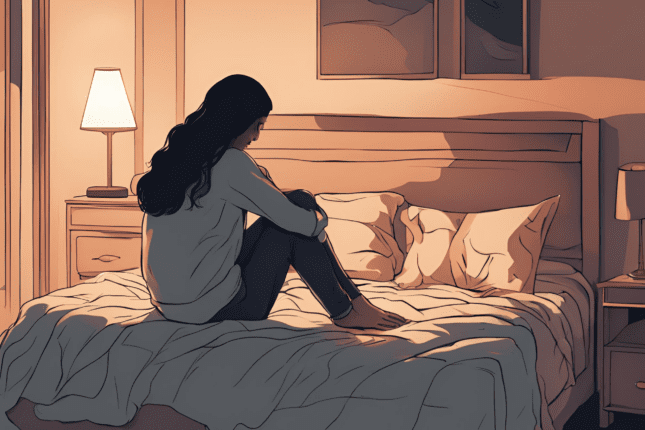Most people have plenty of reasons to feel anxious right now. Whether it’s around personal affairs, the uncertain forecast for the field of psychotherapy, or an overall unease with the current state of the world, there’s a collective and palpable sense of worry in the air. Fortunately, a few tireless souls have spent their careers trying to unlock the magical formula for anxiety treatment.
One of them is David Barlow. The author of 60 books and hundreds of articles, with almost half a century of practice behind him, he’s widely considered the dean of anxiety researchers. In his work, he’s been one of the foremost proponents of using exposure and cognitive behavior therapy (CBT) as the primary treatment approach with anxiety disorders.
When we spoke with him in 2016, in the aftermath of a polarizing election and a time of political uncertainty, he agreed to share his thoughts on the nature of anxiety and what research has revealed about the most effective treatments for it.
——
RH: Anxiety is among the most common issues that regularly bring clients into our offices. As an anxiety researcher, what do you make of the pervasive anxiety being reported, at least among Democratic voters, as a result of the election?
Barlow: For starters, the election results came as such a shock. And to a large proportion of people, especially students on college campuses, it was extremely upsetting. They didn’t get a chance to gradually acclimate to the reality and maybe introduce whatever rays of hope they could integrate into the developments. Polls just got it so wrong.
Even for people of my generation, who’ve witnessed a lot of unexpected, adverse events on a national scale, including the Kennedy assassination, the election was still a shocker. So there’s the sense of uncertainty about our future and a feeling of helplessness in terms of how to cope. All these things just arrow right into the core of anxiety.
RH: So will we gradually desensitize to this?
Barlow: Exposure will do its work. As with most events of this kind, barring other unpredictable factors, most people will resolve their initial reactions, like sleeplessness or feelings of horror. But some will experience underlying trauma and will have a difficult time getting over it. They’ll probably need to seek some help.
RH: How did you become interested in studying anxiety in the first place?
Barlow: I had the good fortune to work with a South African psychiatrist named Joseph Wolpe, one of the founding fathers of the cognitive behavioral approach back in the ’60s, who originated systematic desensitization as one of the first brief treatments for anxiety and phobias. Anxiety is such a common problem, but in those days, we didn’t really have any effective targeted treatments. There was no biological psychiatry, and our methods were mainly psychoanalytic, with some Rogerian approaches.
After I was fortunate enough to have worked with Wolpe for a summer, I began studying snake phobias among female college sophomores to investigate the specifics of treatment effects. A lot of my colleagues were doing similar studies, so we joked that by the early ’70s, there wasn’t a college sophomore left on campus who was afraid of snakes.
RH: What’s the difference between fear and anxiety?
Barlow: When we work with all of our clients, we have to emphasize that there’s nothing wrong with anxiety itself. It’s a perfectly normal, useful emotion. The same could be said of the somewhat related emotion of fear, although those are two different emotions. Fear is an emotion that’s activated when a threat or danger is identified and imminent. For instance, you’re beginning to cross the street and at the last second you see a car bearing down on you. That’s a real danger that’s going to happen right now unless your body kicks in with a fight-or-flight response. That response goes directly from visual cues to your emotional brain, the amygdala, so it’s quick and protective. On the other hand, the function of anxiety is to prepare us to best cope with some challenge or threat that isn’t occurring right now but may test us in the future.
Most of the time, anxiety helps us achieve a goal. We study harder for a test, or we work on our interview skills for a job interview. But if the coping steps you take to deal with the upcoming challenge don’t work, you may wind up in a continual state of anxiety or worry.
RH: What’s the state of the art in regard to anxiety treatment today?
Barlow: There are a large number of evidence-based treatments from different theoretical orientations for DSM disorders such as panic disorder, OCD, PTSD. There are so many, in fact, that’s it’s almost impossible to keep on top of it all. So seeing how many theories overlap and borrow from each other, most clinicians end up taking bits and pieces of these treatments, which can get confusing. What I’ve been trying to do with my research team is to distill the basic core principles that make these treatments effective.
RH: You’re looking into common denominators across theories?
Barlow: We’ve identified five mechanisms of action among the various effective treatments for emotional disorders, like anxiety, mood-related disorders, eating disorders, and such. We call it the Unified Protocol for Transdiagnostic Treatment of Emotional Disorders.
The first principle of treatment is helping clients develop mindful awareness of their emotional experiences. People with emotional disorders tend to repress and avoid their own emotions. That’s a concept that cuts across a lot of different therapies. The second one is developing more cognitive flexibility in your appraisal of experiences that are very emotional for you. In other words, you develop different interpretations of situations you’re finding anxiety provoking. What are the alternative interpretations for what is happening? This is standard cognitive therapy.
The third one is identifying all the types of emotional avoidance that people engage in with these disorders. For example, they may engage in subtle behavioral avoidance of their intense emotional experiences by trying to distract themselves, or changing the subject, or just getting out of the situation they’re in. What they’re trying to do is avoid their intense emotions, especially those with strong action tendencies, like the flight-or-fight response. Effective therapies teach clients different ways of handling situations so they don’t engage in those types of behaviors.
The fourth dimension involves looking at the various components of your somatic response to emotion: your heart beats faster, you perspire, you begin to hyperventilate a little bit. We teach people how to recognize and get control of those bodily responses.The last one we call emotion exposure. Depending on the problem, we have people go into their various situations or engage their emotion triggers in order to experience their emotions at their most intense. But here, the focus isn’t on exposure to the external situations or the fear cues, it’s to the emotional experience itself.
RH: That all makes sense. Did you run into any surprises as you developed this?
Barlow: Well, we were continually amazed at the variety of strategies clients use to avoid any aspect of intense emotional experience. It’s also interesting that the clients themselves aren’t always aware they’re engaging in this avoidance behavior. Often it’s implicit, or unconscious. Many individuals who experience panic attacks, for example, have given up drinking caffeinated beverages. If you ask them why, they say things like they’ve lost their taste for them. But we know mild arousal associated with these stimulants provokes anxiety. We discovered that this somatic sensitivity is a feature of all emotional disorders, including OCD and depression. So part of our treatment approach is evoking many of the somatic sensations in the safety of the therapist’s office, allowing exposure and subsequent extinction to do its work.
RH: With all your experience working with anxiety for all these years, what advice do you want to offer clinicians in treating it?
Barlow: All psychotherapists should be aware that the psychotherapeutic treatments we now have at our disposal are at least as effective as medications in the short term and more effective in the long term, because clients are less likely to relapse. They’re also preferred by clients over medications by a three-to-one margin. In fact, the National Academy of Medicine just came out with a proposal strongly recommending that the government put much more emphasis on supporting psychotherapeutic treatments, particularly the evidence-based ones. Over the past several decades, psychotherapy has taken a backseat to medication, but I think that’s changing. It’s increasingly becoming a first-line treatment. In fact, in some other places, like the UK, where they have single-payer national healthcare, it’s already become the preferred treatment.
RH: How do you respond to critiques of CBT who say it’s a Band-Aid that doesn’t go deep enough?
Barlow: In the ’70s, I heard a lot of people make that argument—that CBT is just treating the symptoms and leaving the underlying conflicts unaddressed. But there have been hundreds of studies now on clients with all manner of diagnoses showing that’s not the case. In fact, CBT clients tend to retain their gains, whether they’re suffering from severe depression or OCD. Whether or not practitioners call themselves CBT therapists, I believe that the Unified Protocol we’ve developed distills the basic effective ingredients in all the varieties of psychotherapy, no matter what they’re called.
Ryan Howes
Ryan Howes, Ph.D., ABPP is a Pasadena, California-based psychologist, musician, and author of the “Mental Health Journal for Men.” Learn more at ryanhowes.net.













